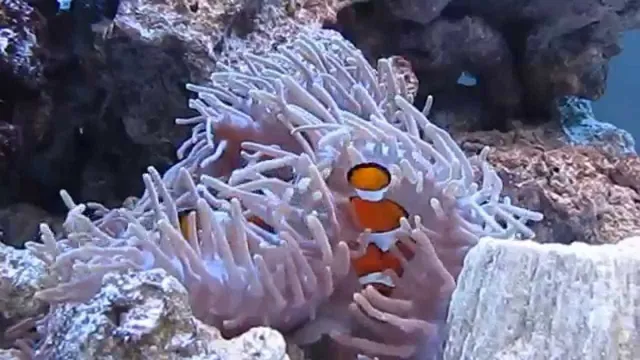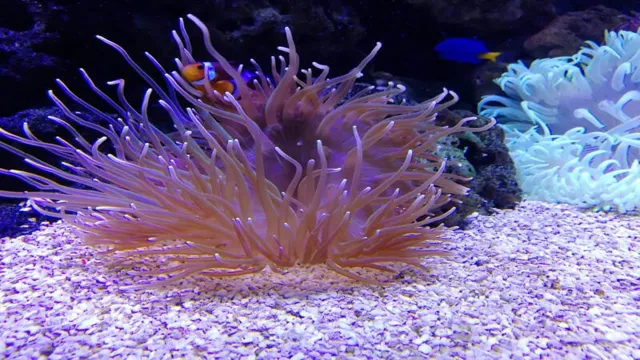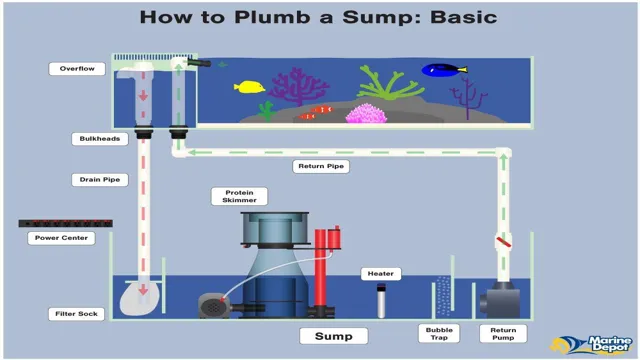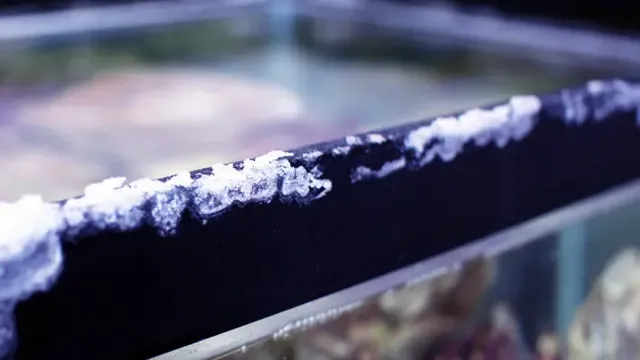How to Add Anemone to Aquarium: Step-by-Step Guide for Beginners

Looking to add some vibrancy and life to your aquarium? Anemones might just be the perfect addition! These eye-catching creatures come in a plethora of colors and sizes and can bring an entirely new level of beauty to your underwater oasis. But how exactly do you add them to your aquarium? It’s a question that many new aquarium owners have, and it’s a valid one. After all, you want to make sure you’re doing everything properly to ensure a happy and healthy environment for your anemones.
In this blog, we’ll guide you through the process of adding anemones to your aquarium, so you can enjoy their stunning beauty without any stress or confusion. Let’s get started!
Choose the Right Type of Anemone
If you’re looking to add an anemone to your aquarium, it’s crucial to pick the right type for your tank. Not all anemones are suitable for every aquarium, as some can grow too large and become a nuisance in smaller setups. Additionally, some anemones require specific care, including lighting and water quality.
Before making a purchase, do your research to ensure the anemone you choose is compatible with the other inhabitants of your tank and the conditions you provide. If you’re unsure, seek advice from a knowledgeable professional or a reputable online community. Remember, a happy and healthy anemone can add a beautiful and unique touch to your aquarium, but choosing the wrong type can lead to disaster.
So, take your time and choose wisely!
Research Different Types of Anemone
Anemones are stunning marine creatures that come in various shapes and sizes. If you’re planning to add an anemone to your aquarium, it’s vital to research the different types to determine the best fit for your tank. Some of the popular types of anemones are bubble tip anemones, carpet anemones, and rock flower anemones.
Bubble tip anemones have vibrant colors and a bulbous shape, making them a popular choice among aquarists. Carpet anemones, on the other hand, have a flattened appearance and tend to grow much larger than other types of anemones. Lastly, rock flower anemones are small and elegant, making them ideal for nano and pico aquariums.
When choosing the appropriate type of anemone for your aquarium, it’s crucial to consider factors such as the size of the tank, lighting, and water parameters. Take the time to research the different types of anemones and their requirements to ensure that the one you choose will thrive in your aquarium.

Consider Compatibility with Other Fish and Invertebrates
When it comes to choosing the right type of anemone for your aquarium, it’s important to consider compatibility with other fish and invertebrates. Not all anemones get along with every species, so you’ll want to do some research before making your selection. Some anemones, like the bubble tip anemone, are known to live harmoniously with a variety of fish species.
Other types, like the carpet anemone, can be more aggressive and territorial, and may harm other invertebrates in the tank. It’s also important to consider the size of your tank and the needs of your anemone species. For example, some anemones require strong lighting and a specific water flow, which may not be suitable for all aquarium setups.
Overall, taking the time to choose the right type of anemone will ensure a healthy and happy environment for all of your aquatic inhabitants.
Prepare Your Aquarium
If you’re looking to add an anemone to your aquarium, there are a few things you should do to prepare your tank. First and foremost, make sure that your water quality is pristine. Anemones are sensitive creatures and can be easily stressed if the water is not ideal.
You should also make sure that your tank is large enough to accommodate the anemone, as they can grow quite large over time. Consider the type of anemone you want to add and make sure that it is compatible with your other tank inhabitants. Additionally, it’s recommended that you use a quarantine tank for at least two weeks to ensure that your new anemone is healthy before adding it to the main tank.
Lastly, take the time to acclimate your anemone to the new tank environment to reduce stress and ensure successful placement. By following these steps, you can add a beautiful anemone to your aquarium and provide a healthy environment for it to thrive.
Ensure Proper Water Parameters
When setting up your aquarium, it’s essential to ensure proper water parameters to create a healthy environment for your aquatic pets. Before introducing any fish or plants, you need to prepare your aquarium adequately. Start by cleaning the tank thoroughly and filling it up with dechlorinated water.
Installing a filter is also crucial to keep the tank’s water clean and healthy for your fish to thrive. Apart from the basic setup, establishing proper water parameters such as pH levels, temperature, and hardness is vital in the success of your aquarium. Different fish species require different water conditions, so it’s essential to research and learn about the specific requirements of the fish you intend to keep. (See Also: How to Get Rid of Springtails in My Aquarium: Effective Tips and Tricks)
Regular testing of the water parameters is also necessary to ensure that levels are within safe limits. By preparing your aquarium adequately and maintaining proper water parameters, you’ll create a safe and healthy environment for your aquatic pets to live, grow, and thrive.
Provide Adequate Lighting
If you’re looking to keep fish as pets or to create a beautiful underwater scene in your home, then you need to prepare your aquarium properly. One vital aspect to consider is providing adequate lighting. Not only does the right lighting make your aquarium more visually appealing, but it’s also critical for the wellbeing of your fish.
Aquarium lighting not only stimulates the growth of plants in your fish tank, but it also provides the necessary light for your fish to thrive. Depending on the species of fish you keep, you may need varying degrees of lighting. For instance, some fish need more light than others, and certain types of aquatic plants require more light to grow.
When preparing your aquarium, make sure you research the specific lighting needs of your fish and plants, and use appropriate lighting accordingly. With proper lighting, you’ll have a beautiful and healthy aquarium in no time.
Create a Safe and Comfortable Environment for Anemone
Preparing your aquarium is crucial to creating a safe and comfortable environment for your anemone. The first step in setting up your tank is choosing the right location and size. Placing your aquarium in an area with stable temperature and minimal sunlight exposure can help prevent fluctuations that can harm your anemone.
The size of the tank depends on the type of anemone you have, as some species require more space and stronger lighting than others. Adding substrate, live rock, and a filtration system can also create a stable and healthy environment for your anemone to thrive in. Additionally, it is important to research the specific needs and behavior of your anemone to ensure the best conditions for their well-being.
By properly preparing your aquarium, you can provide a safe and comfortable home for your anemone to live happily.
Acclimate Your Anemone
Adding anemones to your aquarium can be an exciting experience for any aquarist. However, it is important to acclimate your new addition properly to ensure that it adapts well to its new environment. First, turn off all equipment in the tank, and float the bag containing the anemone in the water for 15-20 minutes to bring its temperature to that of the aquarium.
Next, slowly add small amounts of aquarium water into the bag over the course of 30 minutes to help the anemone adjust to the water chemistry. Then, use a net or your hands to transfer the anemone into the aquarium. Allow the anemone to initially settle in a spot where it will not be disturbed.
Finally, monitor the anemone closely over the first few days to ensure it is doing well and properly acclimating to its new home. With patience and proper acclimation, your new addition will be thriving in no time!
Float the Anemone Bag in Your Aquarium to Equalize Temperature
If you’ve just brought home an anemone, congratulations, you’re in for a treat! These beautiful creatures require proper acclimation to ensure a happy and healthy life in your aquarium. One of the best ways to acclimate your anemone is by floating the bag it came in directly in your aquarium. But before you drop it in, it’s important to make sure the temperatures are equalized.
You can do this by floating the bag for about 15-20 minutes, making sure to check the temperature with a reliable thermometer periodically. Once the temperature is equal, you can carefully release your anemone into its new home. Be patient and let it adjust to the new environment on its own time.
Good luck and enjoy your beautiful new addition to the aquarium!
Gradually Add Aquarium Water to the Bag
Acclimating your anemone is vital to its health and survival in your aquarium. One important step in the acclimation process is gradually adding aquarium water to the bag your anemone came in. This allows the anemone to adjust to the new water conditions and temperature slowly. (See Also: How to Make a Koi Aquarium: A Step-by-Step Guide for Creating a Beautiful Home for Your Fish)
It’s essential to take your time during this step, as a sudden temperature or pH change can shock your anemone and cause stress. To start, float the bag in your aquarium for 15-20 minutes to allow the water temperatures to equalize. Then, using a clean, plastic cup, slowly add small amounts of aquarium water to the bag over a period of 30-45 minutes.
Keep an eye on the water level in the bag and add water as needed to ensure the anemone is fully submerged. This accustoms your anemone to the water conditions in your aquarium, decreasing the chance of stress and allowing for a smoother transition into its new environment. With patience and care, you can help your anemone thrive in its new home.
Release the Anemone into the Aquarium
Before adding your anemone to your aquarium, it’s essential to acclimate it to its new surroundings. Acclimation is a crucial step that will help your anemone adjust to the temperature, pH levels, and salinity of the water, reducing stress and the risk of shock. To begin the process, float your anemone in a bag within your aquarium for at least 30 minutes.
This allows the temperature in the bag to equalize with the tank. Then, gradually add small amounts of your tank water to the bag every 10-15 minutes for an hour or two. This will help your anemone adapt to the water chemistry and pH levels of the tank.
Once the process is complete, release your anemone into the aquarium, ideally near a shady area where it can settle and get comfortable. Remember, acclimation is critical to the health and survival of your anemone, so take the time to do it correctly for the best results.
Care for Your Anemone
Adding an anemone to your aquarium is a delicate process that demands your attention and care. Before you embark on such an endeavor, it’s important to ensure that your tank is appropriately sized for the anemone you intend to add. Anemones thrive in tanks with clean, stable water conditions, and ample lighting.
Once you have researched the type of anemone you want to add and confirmed that your tank is suitable, you can begin the acclimation process. Introduce your anemone to the aquarium slowly over several hours or even days, allowing it to adjust to the new environment gradually. However, be mindful that anemones can sting other creatures or themselves, so it’s important to provide them with enough space.
Remember to feed your anemone properly, and keep an eye out for any signs of distress or illness, such as excessive movement or discoloration. With the right care, your anemone can flourish in your aquarium for many years to come.
Feed Your Anemone Regularly
Anemones are fascinating creatures that require the utmost care. If you’re a proud owner of one, you may be wondering how to take care of it properly. One of the most important things you can do to keep your anemone healthy is to feed it regularly.
Anemones are predators, so they thrive on a diet of small fish, shrimp, and other meaty foods. Make sure to feed your anemone two to three times a week, depending on its size. However, be careful not to overfeed it, as this can lead to water quality problems and even death.
When feeding your anemone, use a feeding stick to target the food directly to its tentacles. This will ensure that the anemone gets the food it needs and that you don’t accidentally feed other tank inhabitants. With proper feeding, your anemone will be a happy and healthy member of your aquarium community.
Monitor Water Quality and Parameters
If you have an anemone in your saltwater aquarium, you already know that they require a lot of care to thrive. One important aspect of caring for anemones is monitoring the water quality and parameters in your tank. Anemones are sensitive creatures and can quickly deteriorate if the water conditions are not just right.
You’ll need to regularly test the water for ammonia, nitrite, nitrate, pH, and salinity levels. If you notice any irregularities, it’s important to take action immediately. Doing regular water changes and maintaining a stable water temperature can also help to keep your anemone healthy.
Additionally, keeping an eye on your anemone’s feeding habits and behavior can give you insight into its overall health and well-being. Remember, a healthy anemone means a vibrant and beautiful addition to your saltwater aquarium.
Take Action if Anemone Shows Signs of Stress or Disease
If you own an anemone, it is important to pay close attention to its health and well-being. Anemones are delicate creatures that can easily become stressed or develop diseases if their needs are not met. One of the most common signs of stress in anemones is retraction. (See Also: How to Make a Bubble Wall Aquarium: A Step-by-Step Guide for Aquatic Enthusiasts)
If your anemone appears withdrawn or is not fully extending its tentacles, this could be a sign that it is not getting enough light or food. On the other hand, if your anemone is appearing deflated or limp, this may indicate a more serious issue such as an infection or parasite. It is important to take action immediately if you notice any signs of stress or disease in your anemone.
This may include changing its lighting or water conditions, administering medication, or seeking the help of a veterinarian. By properly caring for your anemone and addressing any issues as they arise, you can help ensure that your pet thrives for years to come. Remember, a happy and healthy anemone is a beautiful addition to any aquarium.
Conclusion
In conclusion, adding anemones to your aquarium can be a bit intimidating, but with the right knowledge and preparation, it can be a rewarding and visually stunning addition to your tank. Just like stepping into a black-tie event, you want to make sure you dress appropriately and are ready to impress. So, ensure your water quality is pristine, your lighting and flow are adequate, and that you have researched the specific type of anemone you are adding.
With all of this squared away, you’ll have a stunning and vibrant centerpiece that will make your aquarium the talk of the reef!”
FAQs
What water parameters are ideal for anemones in an aquarium?
Anemones thrive in aquariums with stable salinity levels between 1.023 and 1.026 and a pH range of 8.1 to 8.4.
How should I acclimate my anemone to the aquarium?
Adding your anemone to a new aquarium often requires acclimation. Float the bag in the aquarium for 15-20 minutes to let the temperature equalize, then slowly add aquarium water to the bag. Repeat this process until the bag is filled with as much aquarium water as possible before netting and releasing the anemone.
Can anemones survive without a host clownfish?
While some anemones and clownfish have a symbiotic relationship, anemones can survive without a host clownfish. However, providing a clownfish can be beneficial to the anemone by providing protection and food.
What are the most common diseases that affect anemones in aquariums?
The most common diseases that affect anemones in aquariums are bacterial infections, parasitic infections, and tissue necrosis.
How much light is needed for anemones in an aquarium?
Most anemones require high-intensity lighting, between 4 and 8 watts per gallon of water, for the photosynthetic symbiotic algae that live in their tissues.
How often and how much should I feed my anemone in an aquarium?
Anemones do not require regular feedings, but a weekly feeding of small pieces of fish, shrimp, or squid can help maintain their health.
Can anemones sting other inhabitants in my aquarium?
Yes, some anemones can sting and harm other invertebrates or fish in your aquarium. It’s important to research which species of anemone are compatible with your current aquarium inhabitants.






